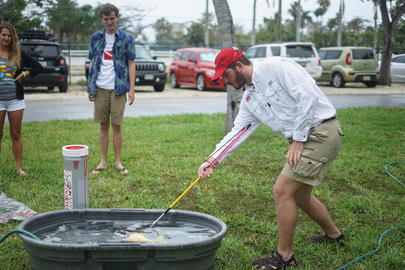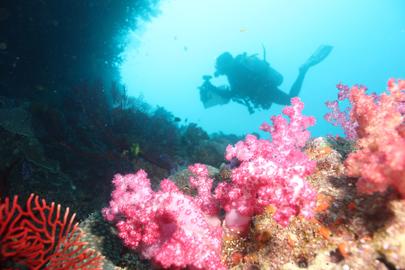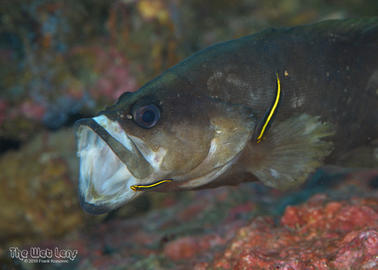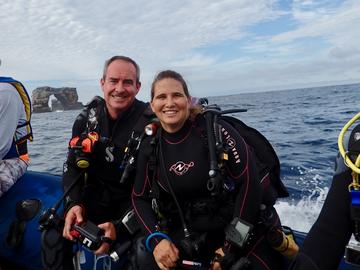This article discusses the impacts of citizen science and highlights several citizen science opportunities, including the Volunteer Fish Survey Project.
Hakai Magazine describes the importance of citizen science in studying the ocean, and highlights the Volunteer Fish Survey Project as well as several other prominent ocean citizen science programs.
REEF is offering a series of free Lionfish Collection and Handling Workshops throughout south Florida and the Keys. Each workshop will include a classroom session covering the background of the invasion, lionfish biology, ecological impacts, current research, collecting and handling techniques, and other ways you can get involved. Attendees can obtain a permit to collect lionfish within the Sanctuary Preservation Areas (SPAs) in the Florida Keys National Marine Sanctuary using hand nets only.
We are excited to share details of two recent scientific publications that leverage the long time-series of species composition information that our citizen science surveys provide. The first study looked at how reef fish community assemblages have changed over time at several sites in Florida. In particular, the researchers looked for evidence of biological homogenization (increasing species similarity between sites.) Homogenization can alter the ecological function of systems as well as the economic value associated with ecosystems. Dr.
This paper describes cleaning behavior that had previously not been documented in a particular species. The findings are the result of the keen eyes of two active REEF surveyors – Carol Cox and Frank Krasovec. Carol frequently surveys in the northern Gulf of Mexico and Frank surveys in his home state of North Carolina. Both photographed Yellowprow Goby, Elacatinus xanthiprora, cleaning other fishes, which is not typical for the species. Scientist and frequent REEF advisor, Dr.
We are very proud to share that Dr. Christy Pattengill-Semmens, REEF Director of Science, and Dr. Brice Semmens, Director of California Cooperative Oceanic Fisheries Investigations and associate professor at Scripps Institution of Oceanography, UC San Diego, have been named Scuba Diving magazine’s April 2019 Sea Heroes! Sponsored by the watch brand Seiko, this award honors the extraordinary work done by scuba divers making a difference for our world’s oceans, reefs and marine life.
A recent paper in Journal of the Ocean Science Foundation describes cleaning behavior that had previously not been documented in a particular species. The findings are the result of the keen eyes of two active REEF surveyors – Carol Cox and Frank Krasovec. Carol frequently surveys in the northern Gulf of Mexico and Frank surveys in his home state of North Carolina. Both photographed Yellowprow Goby, Elacatinus xanthiprora, cleaning other fishes, which is not typical for the species. Scientist and frequent REEF advisor, Dr.
We are very proud to share that Dr. Christy Pattengill-Semmens, REEF Director of Science, and Dr. Brice Semmens, Director of California Cooperative Oceanic Fisheries Investigations and associate professor at Scripps Institution of Oceanography, UC San Diego, have been named Scuba Diving magazine’s April 2019 Sea Heroes! Sponsored by the watch brand Seiko, this award honors the extraordinary work done by scuba divers making a difference for our world’s oceans, reefs and marine life.
The lead author of this study has previously used the REEF Volunteer Fish Survey Project database to construct detailed food webs of coral reef ecosystems in several Caribbean locations, including Jamaica (see here). In this paper, the authors assess the reliability of historical reconstructions of biodiversity from the paleocommunity by simulating the fossilization of a highly threatened and disturbed modern ecosystem, a Caribbean coral reef.
This paper presents reconstructions of coral reef food webs in three Greater Antillean regions of the Caribbean: the Cayman Islands, Cuba, and Jamaica. The REEF Volunteer Fish Survey Project dataset is one of several used to construct the food webs. The datasets presented in this publication will facilitate comparisons of historical and regional variation, the assessment of impacts of species loss and invasion, and the application of food webs to ecosystem analyses (e.g.




